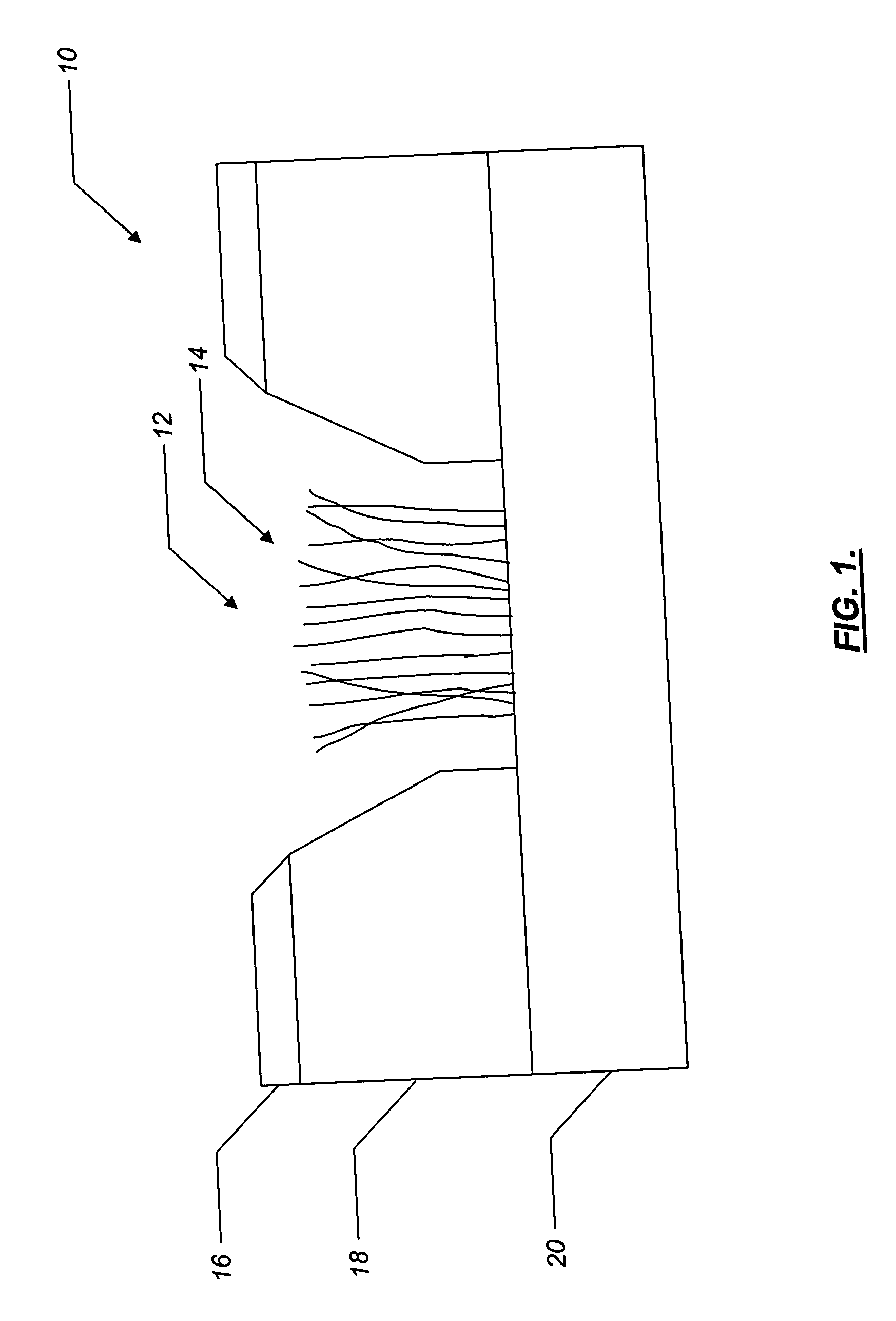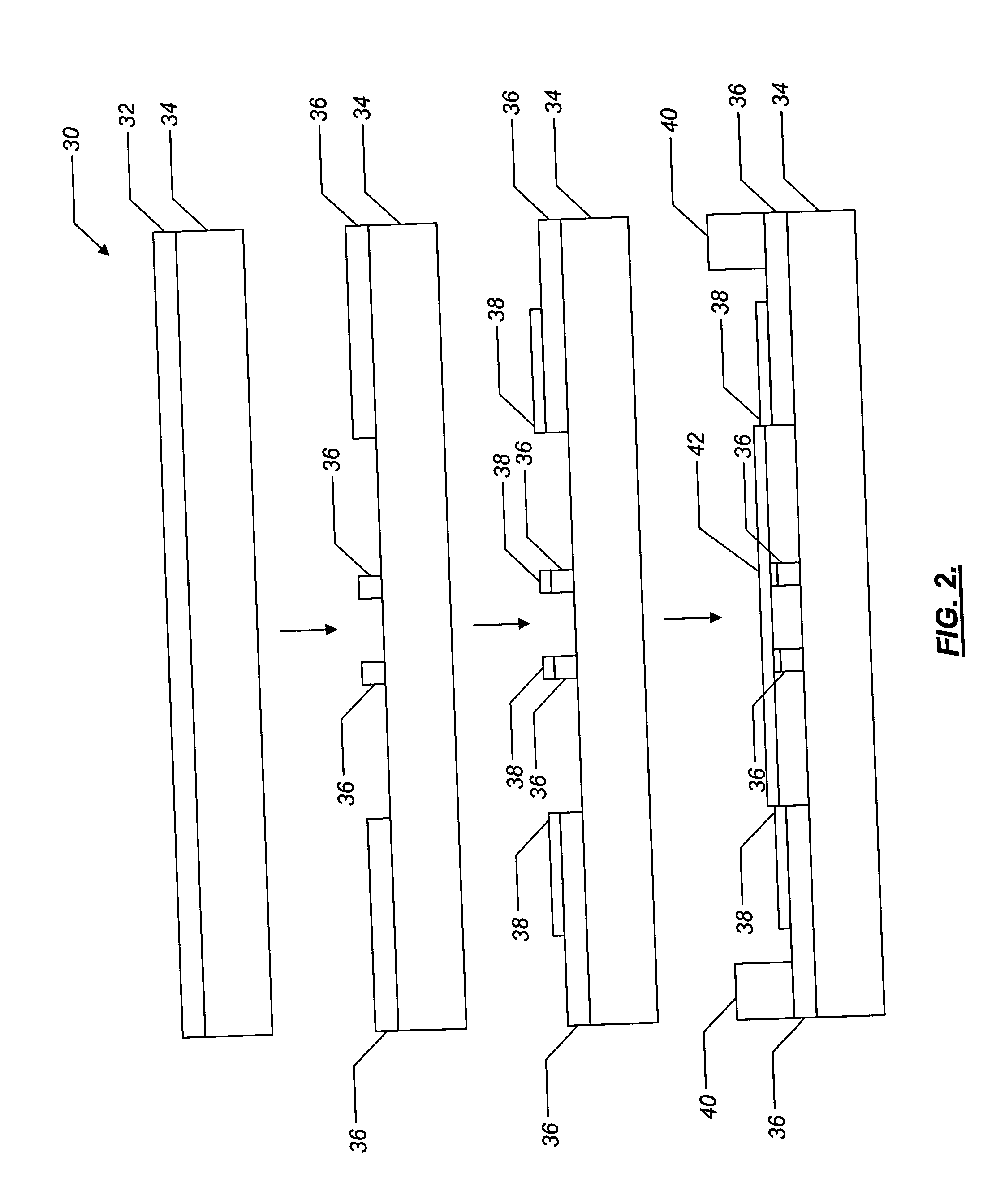Self-aligned gated carbon nanotube field emitter structures and associated methods of fabrication
a carbon nanotube and emitter technology, applied in the field of nanotechnology, can solve the problems of limiting the operating life, degrading the performance of the fea, and affecting the operation efficiency of the fea, and achieve the effect of simple, cost-effective and efficien
- Summary
- Abstract
- Description
- Claims
- Application Information
AI Technical Summary
Benefits of technology
Problems solved by technology
Method used
Image
Examples
Embodiment Construction
[0019] Referring to FIG. 1, as described above, a conventional carbon nanotube field emitter array (“FEA”) 10 fabricated using a modified Spindt-like process suffers from several problems. The first problem is that each micro-cavity 12 of the carbon nanotube FEA 10 contains a tangled mass of carbon nanotubes 14. This tangled mass of carbon nanotubes 14 behaves as a block conductor. Preferably, a field emitter structure includes a plurality of sharp, point-like electron emission sources (each consisting of only one or a few carbon nanotubes), rather than a block conductor. The second problem is that the carbon nanotubes are generally, but not universally, aligned perpendicular to the associated anode or gate electrode 16 (a dielectric layer 18 and a cathode electrode 20 are also illustrated). Under electrostatic forces, the off-angle carbon nanotubes may be displaced and short to the gate. Likewise, the off-angle carbon nanotubes may result in emission into the gate. Preferably, all ...
PUM
 Login to View More
Login to View More Abstract
Description
Claims
Application Information
 Login to View More
Login to View More - R&D
- Intellectual Property
- Life Sciences
- Materials
- Tech Scout
- Unparalleled Data Quality
- Higher Quality Content
- 60% Fewer Hallucinations
Browse by: Latest US Patents, China's latest patents, Technical Efficacy Thesaurus, Application Domain, Technology Topic, Popular Technical Reports.
© 2025 PatSnap. All rights reserved.Legal|Privacy policy|Modern Slavery Act Transparency Statement|Sitemap|About US| Contact US: help@patsnap.com



